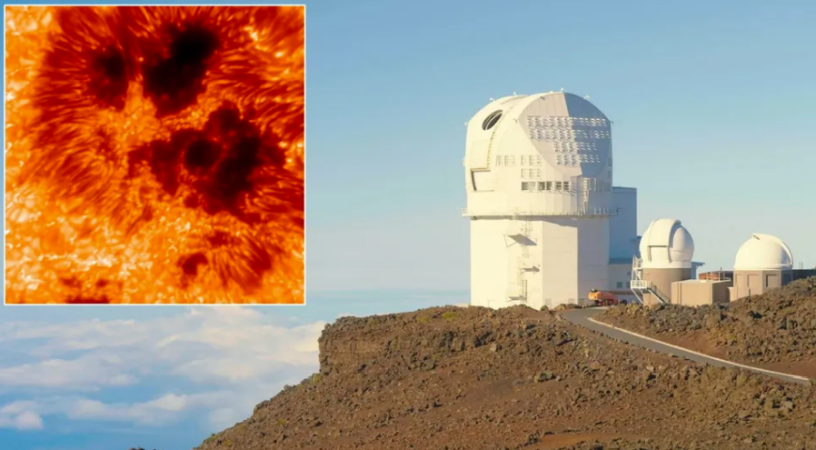Scientists announced on Thursday (April 24) that the world’s largest solar telescope has been equipped with a powerful new instrument that promises to provide deeper insights into the behavior of our sun than ever before.
The Daniel K. Inouye Solar Telescope, situated atop a mountain on the Hawaiian island of Maui, has already delivered stunningly detailed images of the sun’s surface. This observatory, funded by the U.S. National Science Foundation, is specifically designed to study the solar atmosphere and magnetic fields in search of tiny features that could answer fundamental questions about the sun. According to scientists, the telescope's already high level of visual detail has now been significantly enhanced through the addition of a new instrument that is capable of extracting maximum information from sunlight.
Matthias Schubert, the project scientist for the new instrument at the Institute for Solar Physics in Germany, remarked in a statement, “The instrument is, so to speak, the heart of the solar telescope, which is now finally beating at its final destination.”
Named the Visible Tunable Filtergraph (VTF), this instrument is the fifth and most advanced to be added to the Inouye Solar Telescope. It is engineered to examine the regions of the sun where solar eruptions originate — namely, the photosphere, which is the visible surface of the sun, and the chromosphere, an invisible layer directly above it — with greater precision than any existing solar observatory. Scientists report that the VTF, which recently observed the sun for the first time, is already proving effective in resolving extremely fine details on the sun’s surface, even though it is still in its technical testing phase.
One image obtained during these initial observations features a sunspot stretching across an immense 241 million square miles (625 million square kilometers) on the sun’s surface. In this image, each individual pixel corresponds to a mere 6.2 miles (10 kilometers) of the sun’s surface. Scientists say that once scientific operations are fully underway, sophisticated computer processing will further sharpen these images, allowing them to resolve even smaller features.
The VTF has been under development at the Institute for Solar Physics in Germany for the past 15 years — nearly the same length of time it took to develop the Inouye Solar Telescope itself. What makes the VTF particularly significant is its extraordinary ability to analyze sunlight in fine detail. The instrument includes two interferometers that decompose sunlight into its basic components. Working like a highly specialized filter for both color and polarization, these interferometers select extremely narrow bands of the sun’s light spectrum, enabling the instrument to produce hundreds of high-resolution images per second.
The resulting data is crucial for helping scientists understand the intricate interactions between hot plasma and magnetic fields that give rise to solar eruptions, the statement noted.
In a photo from the NSF/NSO/AURA, engineers and scientists can be seen working on the VTF inside the Inouye Solar Telescope’s Coudé Lab as they prepared the instrument for its first use.
Sami Solanki, director of the Max Planck Institute for Solar System Research in Germany — a partner in the project — said in a statement, “VTF enables images of unprecedented quality and thus heralds a new era in ground-based solar observation.”
The Inouye Solar Telescope is built to function for 44 years, a span that should cover four complete 11-year solar cycles. Over this time, the telescope’s collection of instruments is expected to evolve.
David Boboltz, associate director for the Daniel K. Inouye Solar Telescope, previously stated, “The real power in the Inouye Solar Telescope is its flexibility, its upgradability. It's like having a Swiss Army Knife to study the sun.”

